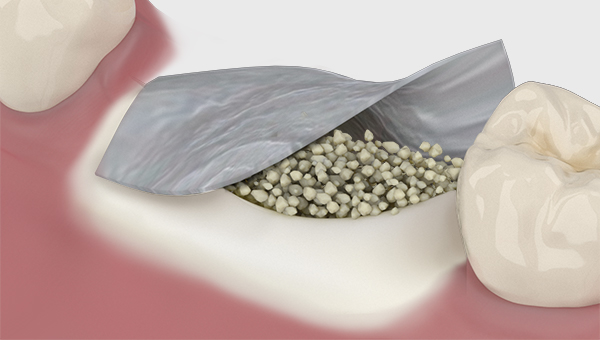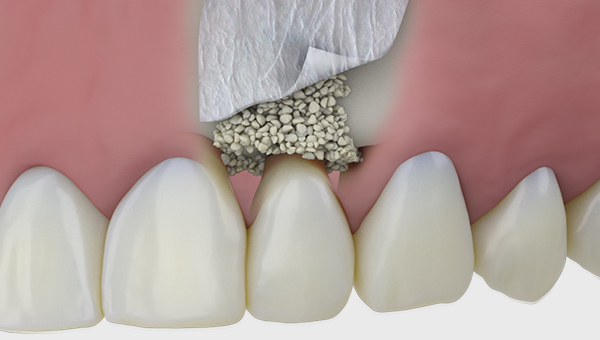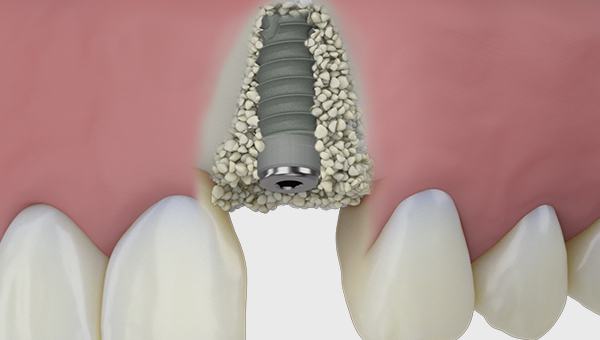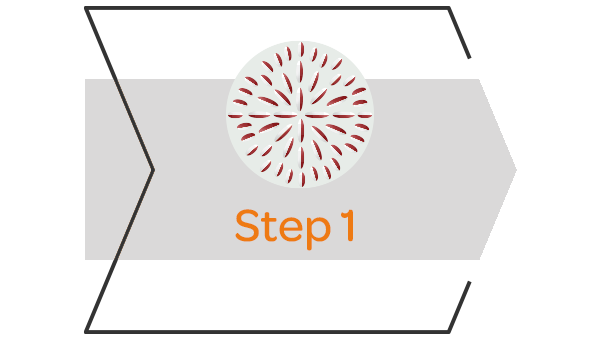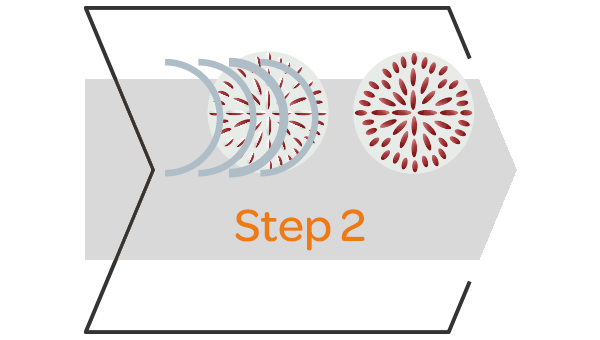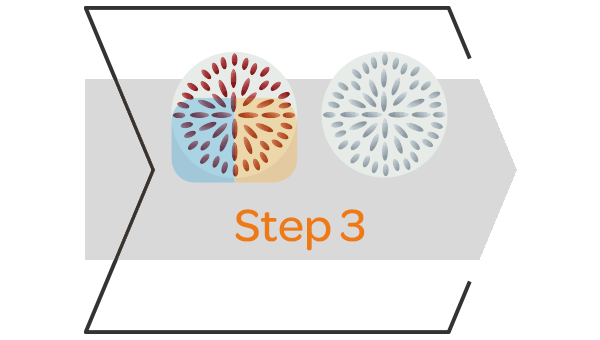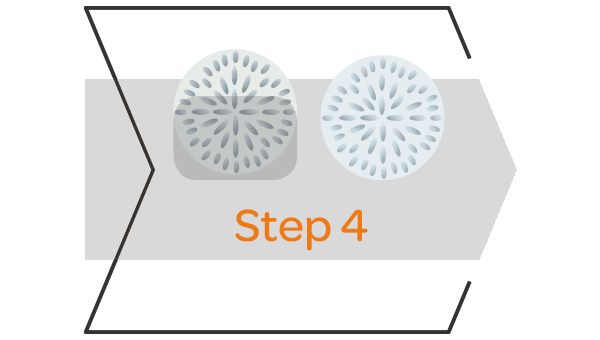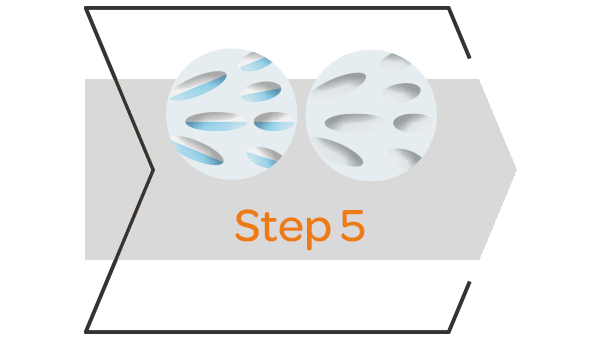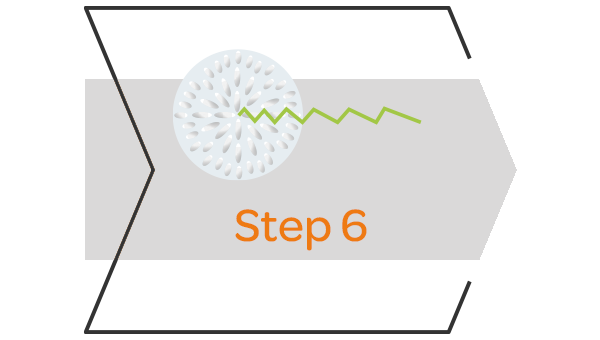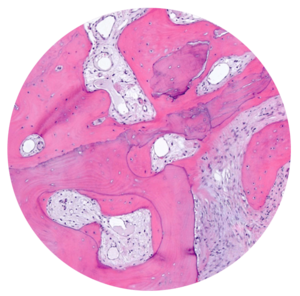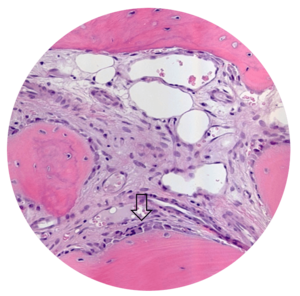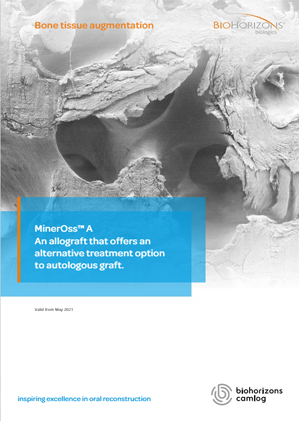MinerOss™ A - Human Allograft Tissue Matrix
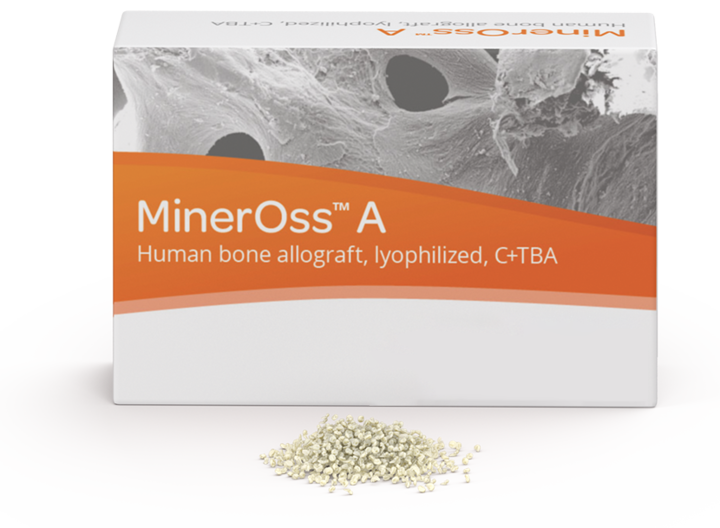
The scientific evidence shows that allografts are the second best option to patient's own bone compared to other bone substitutes.1 MinerOss™ A is a processed allogenic bone tissue that offers proven, reliable, and predictable surgical outcomes comparable to autologous bone harvested from intra-oral donor sites.
MinerOss™ A is an allograft predominantly derived from human donor femoral heads post hip replacement surgery. The donor tissue is thoroughly inspected and undergoes a strict serological screening protocol.
Thanks to its natural bone composition consisting of mineralised human collagen, MinerOss™ A shows a high biologic regeneration capability in combination with natural remodelling. Therefore, MinerOss™ A is an excellent alternative to autologous bone, meaning that there is no need for an intraoral surgical donor site, which reduces morbidity for the patient.
MinerOss™ A undergoes high safety standards in its production process and guarantees a 5-year shelf life at 5°C - 30°C.
Optimal for the following indications
Large bone defects where one bone wall is maintained can be restored to replace missing or inadequate bone tissue, or for filling or stabilizing bone defects by using MinerOss™ A in combination with a collagen membrane.
- Regeneration of periodontal osseous defects
- Regeneration after cyst and root tip resections
- Regeneration of extraction sockets
- Regeneration of gaps between alveolar wall and dental implants
- Regeneration of gaps around block grafts
- Sinus augmentation
- Horizontal augmentation of alveolar ridges
- Three-dimensional (horizontal and/or vertical) augmentation of alveolar ridges
Product characteristics of MinerOss™ A
- Bone from human donors (living donors: femoral heads, post-mortem donors: diaphysis)
- Natural bone composition - mineralized human collagen
- High biologic regeneration capability and natural remodeling
- High safety standards
- 5 years shelf-life at 5°C - 30°C
The scientific evidence shows that allografts are the second-best option to patient's own bone compared to other bone substitutes.1
- Shorter surgery time: The ready-to-use allograft shortens surgery time by eliminating the need for a donor site.
- Lower patient morbidity and less pain for the patient: Avoiding a donor site eliminates the post-operative pain associated with a second procedure.
- Unlimited availability: It is predominantly derived from human donor femoral heads post hip replacement surgery.
- No clinical difference in final incorporation compared to autologous bone.3, 7
Histological structure of MinerOss™ A
Histology of biopsy harvested 7 months after block augmentation3, 5, 6
Safety and Quality
Serological testing
After thorough donor anamnesis, maximum safety is assured via a series of strict serological testing combined with C+TBA´s Allotec® purification procedure and radiological sterilization. First, serology and nucleic acid tests (NAT) are performed to identify infections before antibodies are detected in the blood. Potential viruses are inactivated, and bacteria destroyed during Allotec® purification procedure where non-collagenic proteins are denatured.
An oxidative treatment is then used to denature persisting soluble proteins and eliminate potential antigenicity. Finally, the tissue undergoes dehydration via a lyophilization technique that facilitates the sublimation of frozen water from solid phase to gas phase. This stage preserves the material’s structural integrity. The lyophilization process is an accepted and well documented procedure that preserves structural properties while improving graft incorporation.5, 6
The microscopic pores within the material ensure rapid rehydration of the tissue. The final sterilization by gamma irradiation guarantees a sterility assurance level (SAL) of 10-6 while ensuring structural and functional integrity of the product and its packaging.
References
[1] Schmitt et al. Clin Oral Implants Res. 2013, 24, 576.
[2] Solakoglu et al. Clin Implant Dent Relat Res. 2019, 21, 1002-1016.
[3] Kloss et al. Clin Case Rep. 2020, 8, 5.
[4] Wen et al. J. Periodont. 2019 Feb; 91(2):215-222.
[5] Kloss et al. Clin Oral Implants Res. 2018, 29, 1163
[6] Tunkel et al. Clinical Case Reports 2020, 00:1-13.
[7] Trajkovski et al. Materials 2018, 11(2).
[8] Barbeck et al. Materials 2019, 12, 3234.
Schlee et al. Head & Face Medicine 2014, 10, 21.
Wang et al. J.Periodont.2019. Blocks, Materials 2019, 12, 3234

